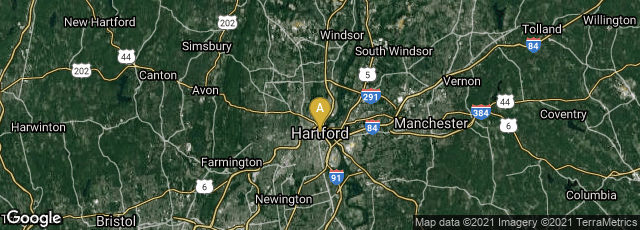
A: Hartford, Connecticut, United States
"The scarcest and most valuable Underwoods are the No. 1 and No. 2. About 12,000 of these were made between 1896 and 1900. They are labeled "Wagner Typewriter Co." on the back, and differ in subtle ways from later Underwoods. One difference is the absence of the see-saw ribbon color selector that you can see on the right side of the machine pictured at the top of this page.
"Underwood Models 3, 4, and 5 were made from late 1900 until late 1931 or early 1932. The No. 3 is a wide-carriage machine, the No. 4 types 76 characters, and the No. 5 types 84 characters. The No. 5 was the quintessential Underwood. Millions of these machines were used by secretaries, journalists, government officials, and writers throughout the first half of the twentieth century. Later Underwoods were superficially modernized, but retained the same basic mechanism. The name "No. 5" was even given to some of these later typewriters, in honor of the model that made the company's fortune. The company was eventually bought by Olivetti, and in the early 1960s, the name "Underwood" finally disappeared from the typewriter world.
"Now, why was the Underwood so successful in its day? Let's review the advantages and disadvantages of the Underwood as compared to other designs:
"Typebars. Typebar typewriters were always popular, but many early typewriters printed from single type elements (typewheels, type cylinders, or type shuttles). Single-element typewriters have excellent alignment, and offer the convenience of interchangeable type styles. But typebar typewriters won out--temporarily--because they were faster. This difference in speed was remedied only by the electrified IBM Selectric, with its "golf ball" type element. In order to maintain relatively good alignment, the Underwood's typebars pass through a U-shaped slotted segment.
"Frontstroke mechanism. As this ad from 1906 points out, writing on the Underwood is in sight, because the typebars hit the front of the platen. That may sound obvious, but most typebar machines of the 1870s-1890s were understrokes: these "blind writers" typed on the bottom of the platen, and the typist had to raise the carriage in order to see what she had just typed. There were many attempts to solve this problem, but the frontstroke approach was probably the best. (The Underwood was not the first frontstroke machine; it was preceded by the Daugherty, among others.)" (https://site.xavier.edu/polt/typewriters/underwood5.html, accessed 3-2021).